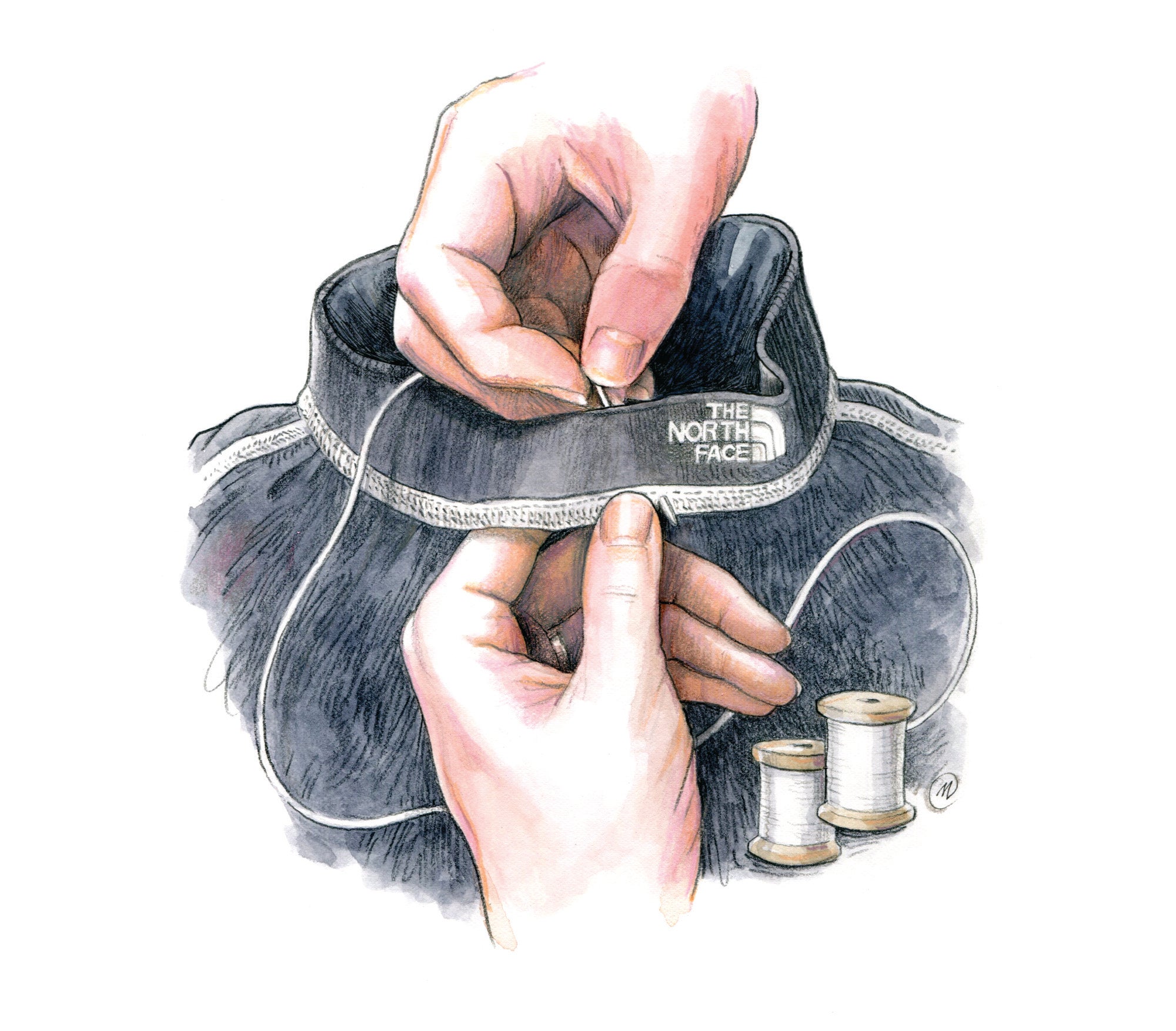The Baselayer That Became My Second Skin

'Mike Carina'
They say nothing lasts forever, but I have a shirt that’s proving otherwise—a polyester baselayer made by The North Face so long ago that the company doesn’t even remember its name. Nothing can kill this shirt (which I affectionately call “Base”), and I’ve tried. Base has summited Kilimanjaro, gone deep into the shimmering blue glacial caves of Alaska, topped the tallest sand dunes in Namibia, and weathered countless other adventures from Iceland to Mexico. It’s the perfect shirt in any weather—it keeps me cool when it’s warm, and warm when it’s cool.
Base has gone well beyond the call of sartorial duty—it doubled as a makeshift sail when my kayak’s spinnaker got shredded in Alaska’s Inside Passage. And I used a bunched-up Base to buffer my grip while snatching away a vampire bat chewing through my wife’s mosquito netting at our camp near Angel Falls, Venezuela.
Base once even saved the night at a black tie event where I was speaking to a group of outdoor adventurers. My luggage was lost en route, so I threw on Base, grabbed a penguin-patterned tie from the hotel gift shop, and marched boldly up to the podium. My thrown-together outfit was so popular that the gift shop sold out of the ties, and a climber offered to buy the shirt off my back. “Base,” I told him, “is not for sale.”
Base is my wearable autobiography. I never repaired the pin holes created by a bib from a marathon on Kiawah Island, South Carolina, where a fast-moving cold front dropped the temperature below freezing.
Flecks of blood still faintly stain it; the pilots of a tiny Cessna in Alaska had neglected to clean up their back seat after a bear hunt. When we landed outside a Yupik village, huskies broke loose from their stays and bowled me over, licking me up and down. “My dogs don’t like strangers!” a Yupik elder said as he stood over me, wide-eyed with disbelief.
One day my wife took Base, now threadbare, to her seamstress for an overhaul. “Can’t you just make it disappear?” the seamstress said after seeing Base’s sorry state.
“No,” my wife replied. “Michael would know immediately if it was missing. He wears it like a second skin.”
So the seamstress repaired Base. When I tried it on, to my surprise it was even better than before. It still had its original fortitude, but had been reinforced—the new stitching clung to me like a futuristic exoskeleton.
Base and I are now good to go for another 30 years. Who knows what we’ll get up to, but I’m sure about what I’ll be wearing.